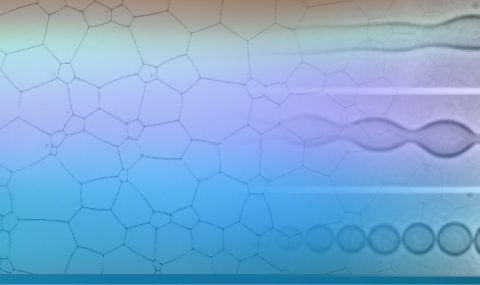The genomes of all organisms are under constant insult by diverse factors such as UV light, oxygen radicals and many others. The resulting lesions on DNA can impede replication and can lead eventually to cell death, unless lesions are repaired or bypassed. The genetic network in charge of carrying out this task in bacteria, called the SOS response, consists of about forty genes, organized in different pathways of repair such as nucleotide excision repair, recombinational repair and mutagenenesis.
How are these pathways coordinated? When are different genes activated and shut off? What are the differences in the response for small and large amounts of DNA damage? We address these questions by studying the dynamics of the SOS response at the level of single cells in real time, using GFP fusions to gene promoters in the network. In the sample movie we show E. coli cells bearing a RecA promoter fused to GFP, after UV irradiation.
Analysis of such movies shows that the corresponding promoter activity of RecA and other SOS is temporally modulated, the modulations appearing at the same time in all cells with high precision, irrespective of the time at which each cell underwent cell division. The network is thus endowed with an internal mechanism for measuring time.
"Precise oscillations in the SOS repair system observed in individual bacteria", S. Vardi, N. Friedman, U. Alon and J. Stavans, PLoS Biol. 3, e238 (2005).


